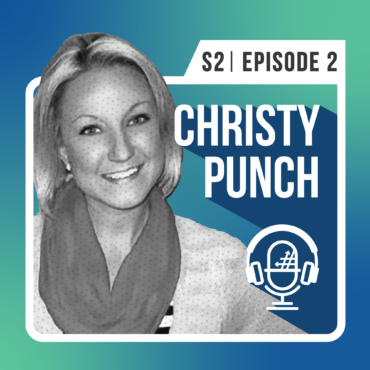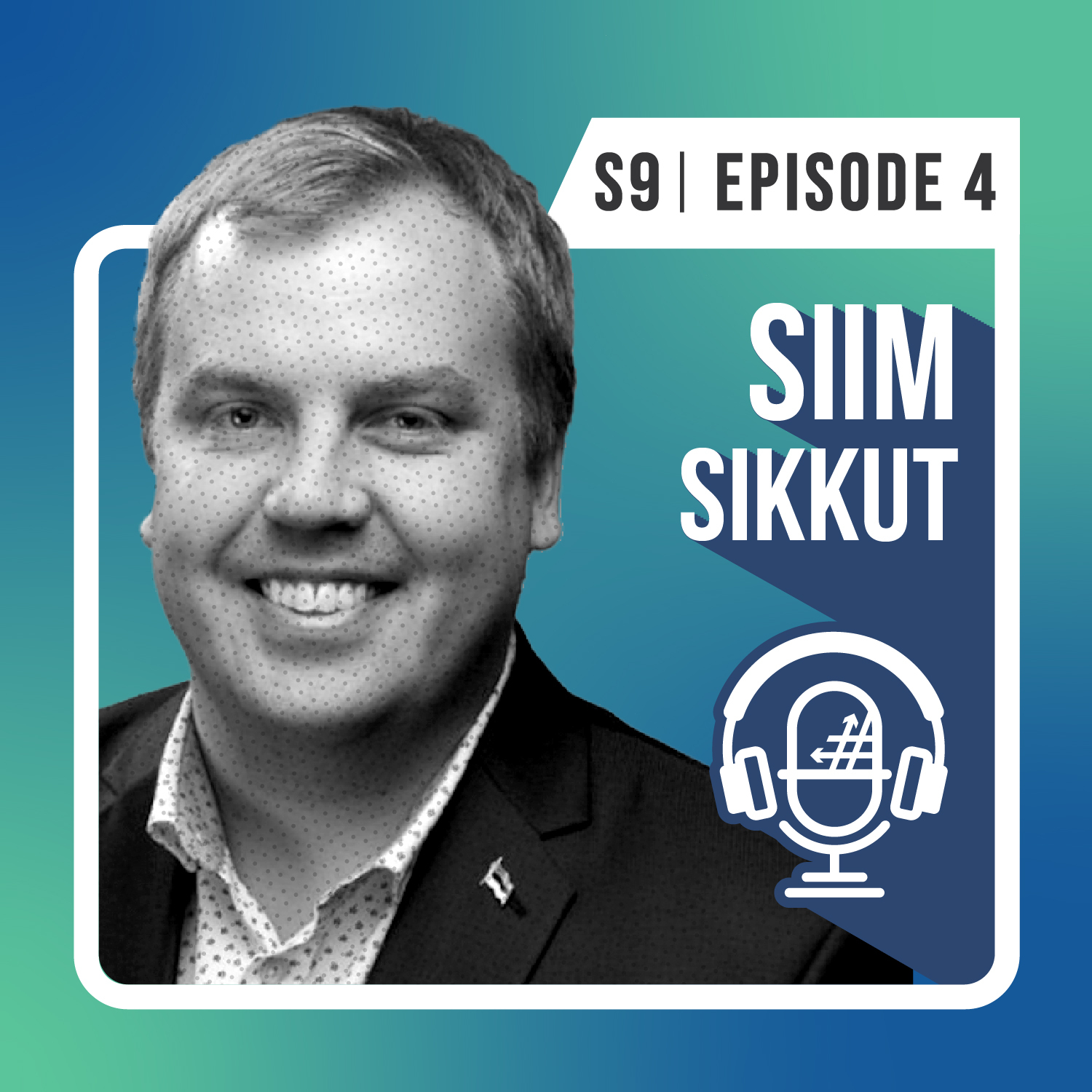S2 E2: Modern Intranets at Wells Fargo with Christy Punch

Serving 263,000 employees across 32 countries is not an easy job. But for Christy, transforming technology for this big organization was a challenge she was excited to undertake.
In today’s episode, we will swim across the innovative processes of an IT team to make an impact on their organization. Together with our guest, Christy Punch, Digital Consultant and Product Manager at Wells Fargo, let’s see the value of thorough user research and microservices in transforming the digital workplace.
In this episode:
Her journey
My love affair with the digital workplace and employee experience began about 12 years ago when I raised my hand to lead the effort for a major intranet overhaul in my previous company. Then, after eight years at that organization, I was ready for a new challenge.
One of my mentors had heard about an open position with Wells Fargo on the enterprise portal team, and at the time, Wells Fargo was growing, and more team members were working remotely. So, the portal was like the front door to the organization and plays a major role in helping team members. My mentor convinced the hiring manager to take a chance of hiring a full-time remote worker who would be working in the same way. Luckily, that provided me with the amazing opportunity to shape the transformation of work at one of the largest banks in the world while also continuing to live and work in my small town of Charleston, South Carolina.
Working at Wells Fargo
It was really overwhelming at first. There’s a lot of additional challenges that you must care for when you support many team members scattered across the globe. The scale is always a variable for us and always top of mind when you’re looking at exploring or delivering any new technology. Things like performance, governance, user-adoption—they take on a whole new meaning with this scale. You quickly realize that you can’t solve for every use case or unique needs. There’s just way too many. So, it enables you to look for creative approaches to solve for multiple use cases and to give stakeholders the tools they need to empower themselves to solve their own needs.
The value of working for a company of this size is the opportunity to have a significant impact on the digital workplace with the work that we do. I get really energized in my role when I see the work that our team does move the needle for the company when delivering on such a large scale. Even just a small enhancement can have a significant impact. A small change may seem pretty minor, it may only save team members 10 minutes of their day or might cut down on help desk calls, but they also translate into significant dollar savings once you apply the scale of that to our companies. So, it really gets me excited and energized around my role when I get to see those types of impacts with what we do.
The Challenge
We had a lot of pain points with SharePoint 2010. I call it the pancake effect because there’s just layers and layers of enhancements and customizations and was a really heavy application for a company of our size, and we constantly had performance issues. It had significant impacts on our team members who couldn’t get to the tools and things that they needed to do their jobs. A team member may need to use four different platforms or applications just to complete one task. And so that requires navigating to each platform, which gives them all different user experiences.
It also limited us in terms of flexibility to offer up solutions for our different lines of business and their unique needs. So, customizations were always complex and costly, and SharePoint didn’t really play well with other vendor applications. We would upgrade to the latest version of on-premise SharePoint and it was always a large-scale project, takes multiple years, ties up our resources, and of course, significant costs. Once that upgrade was finished, it was only a matter of time before we had to upgrade to the next version to avoid end-of-life support.
So, we were at a decision point: Do we continue this carousel of upgrades? Or is it time to take a step off that carousel and look at the problems that we really need to solve with the platform agnostic approach, rather than letting the technology always determine what we better shouldn’t do?
The role of senior leadership
In taking a different approach from the normal upgrade carousel, we needed leadership support funds to be able to do something.
In order to convince them to try something different, we had to show our leadership that investment in something more innovative would save us costs in the long term. We had to show that, yes, we’re making a comparable investment with our normal upgrade pattern, but it’s going to enable us to get off this upgrade cycle and provide us with the opportunity to explore different approaches to solve for line of business and team member needs that in the past we may not have been able to address because we were tied up by our technology.
We were lucky to have that support and heavy involvement from our senior leadership, and I think it goes without saying that in any large technology effort that’s probably one of the most critical things that you need to be successful.
User research and concept design
We spent an entire year just on user research—driving out concepts and prototypes and really trying to understand and learn what our true needs are and what we needed to solve for. We did significant internal user research with our team members and spent a lot of time with our internal stakeholders.
And then we went through an intuitive design process where we started with a concept design. We brought in team members and stakeholders and had them react to that design. We asked them a lot of questions and feedback, and then that feedback was fed on the next design. We continued that cycle, and I think we iterated through at least 12 different concept designs and prototypes with these groups until we got to a point where the majority of the feedback was very positive.
It wasn’t very agile when you’re trying to move quickly through delivering something, but we knew that in order to shift and reset our assumptions of what our needs were from just years past, we needed to go through this exercise to really reset ourselves and determine what those high-level needs were.
Microservices
In parallel to working on the user research and design concepts, we also started to work with our technology team and asked them to do their own research to explore new technology approaches to see the different ways to address some of our major pain points we had identified.
Our technology team came back to us and brought the concept of microservices. This was about late 2015, so it was a fairly new concept, and I’ll admit, I was really skeptical at first because it sounded really complex and very new. But after learning about the potential benefits that we would have and the opportunities that it could create for us down the road, it was really an easy sell.
The value of microservices for us is that it allowed us to move away from being reliant on SharePoint as a platform and enabled us to use SharePoint more as a content management system. Now we look at SharePoint in a different way, and how we use it with our new microservices has now rendered seamless user experience that we got to control and design.
Making a huge impact: new enterprise portal design
With our new portal and the microservices approach, we are looking at ways to empower our lines of business and other application owners to build solutions for our home page. From our user research and feedback, we discovered that our team members didn’t have a lot of time to spend reading all the content on our home page reading every news article. They wanted to understand the top things they had to know if they only had 2 minutes.
So, we created a basic feature that provides our communicators with a way to push very brief messages. We limit it to 120 characters, and each update is tied to a date. So, it might say, “Do Friday”, or “Read by this date”, et cetera. And then those updates will stack based on what’s the timeliest item. We also color code them.
It’s a very simple widget with very basic functionality, but we’ve seen a big positive response with that new feature. The team members really liked it. They saw a lot of value in it, and it’s really shifted the way that our communicators are pushing out information to our team members. It’s making them think differently in terms of how they present that content.
Another feature that I was most excited about is what we call notifications, and it is literally just like what you would expect—a little bell icon across our digital workplace. So what it does is it aggregates and surface notices from multiple enterprises or lines of business systems so we can take action or make approvals all in one place. And now it’s available as a mobile experience because we’ve optimized this new mobile site.
Improved mobile experience
When we were on SharePoint 2010, we didn’t really have much of a mobile experience. With our new enterprise portal, we moved to what’s called adaptive design. Now you can quickly scroll through content and read content, navigate to places you need, make those approvals with notifications. And that really satisfied our team members. But we still have a lot of work to do with mobiles.
Our team members use mobiles for very specific use cases. So, we’re investing in improving only the things that our team members want to do on mobile versus trying to make everything mobile. And that has really helped us determine our baseline when it comes to mobile experience.
Making #ShiftHappen
Wells Fargo has undergone a great amount of changes over the past three years. These changes have really fueled a greater focus on not just improving our customer experience, but also our team members’ experience. The leadership support that our company gets has been really crucial, because we believe that you can’t have happy customers if you don’t have happy team members.
So, my advice for others who are undergoing change is to be open to that change and be willing to do something different. Step out of your comfort zone, but do not just change for change’s sake. It’s about doing it the right way. And for me, it always goes back to user research and active listening and always making sure that you’re testing and learning with new technology. At the end of the day, listen to your team members and spend time understanding how they work, what their true needs are, and then solving that instead of letting the technology drive these changes.
Today’s takeaway from Christy:
“Shift away from letting technology constrain you in what you can or can’t do. Figure out what pain points you want to solve, what state you want to be in, and then look for the right technology to help you get there.”
Subscribe where you get your podcasts! Search for “#ShiftHappens” in your favorite podcast app.
With over 20 years of business and technology experience, Dux has driven organizational transformations worldwide with his ability to simplify complex ideas and deliver relevant solutions. He serves as the Chief Brand Officer of AvePoint who has authored the LinkedIn Learning course How to Build Your Personal Brand, the book SharePoint for Project Management, as well as numerous whitepapers and articles. As a public speaker, Dux has delivered engaging, interactive presentations to more than 25,000 people at leading industry events around the world. He also hosts the modern workplace podcast #shifthappens that focuses on how leading organizations navigated their business transformation journey. Dux advocates tirelessly for inclusion, using technology for good, and philanthropic initiatives. Connect with him: http://dux.sy



